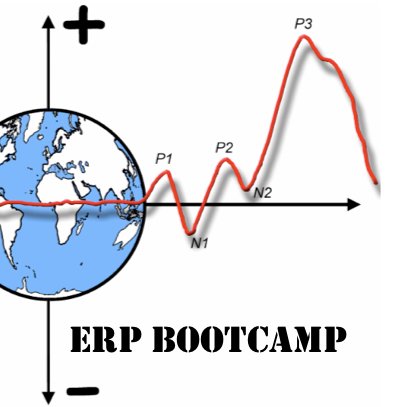
Steve Luck
@stevenjluck
Followers
4K
Following
1K
Media
42
Statuses
1K
vision scientist + cognitive scientist + neuroscientist + EEG/ERP methodologist (@erpbootcamp)
UC-Davis Center for Mind & Brain
Joined January 2013
We are pleased to announce a new metric for quantifying the quality of ERP data. We call this metric the Standardized Measurement Error (SME). See this blog post for details. @andrewxstewart @simmonsaam @mijkenijk 1/n
erpinfo.org
I’ve been doing ERP research for over 30 years, and for that entire time I have been looking for a metric of data quality. I’d like to be able to quantify the noise in my data in a variety of...
3
78
150
New Paper: Using binocular rivalry, we investigate how rapidly the brain amplifies information from the eye the person is aware of and find it is very fast. See blog post and paper for details:
lucklab.ucdavis.edu
Krisst, L. C., & Luck, S. J. (in press). Electroencephalographic decoding of conscious versus unconscious representations during binocular rivalry. Journal of Cognitive Neuroscience . https://doi.o...
0
2
13
Webinar: On July 25, we will be holding a 2-hour Zoom webinar to explain how decoding works at a conceptual level and show how to implement in ERPLAB. The webinar will begin at 9:00 AM Pacific Time. Advance registration is required.
1
6
19
Software: In mid-July, we will be releasing Version 10 of ERPLAB Toolbox, which will include a set of tools for ERP decoding. If you know how to do conventional ERP analyses, it will be trivial for you to do ERP decoding.
erpinfo.org
1
1
16
We’re launching an initiative we call “ERP Decoding for Everyone”. It consists of two parts: Easy-to-use open-source software, and a free webinar that shows how it works.
erpinfo.org
You can access the recording here . You can access the final PDF of the slides here . You can access the data here . fMRI research has used decoding methods for over 20 years. These methods make it...
2
7
31
This was inspired by a recent project where we collected EEG data from 300 people from various diagnostic groups across 5 sites. Monitoring data quality was essential in this project -- we didn't want to detect a problem 6 months after the data were recorded!
0
0
2
This can tell you if a given subject has unusual levels of line noise, low-frequency drift, broadband noise, etc. Of course, there are other ways to get this information from EEGLAB. However, our new tool makes it super easy to do a quick check of data quality.
1
0
1
We also added a simple way of summarizing data quality from the raw EEG. Specifically, you can now rapidly quantify the power in both default and user-defined frequency bands.
github.com
ERPLAB Toolbox is a free, open-source Matlab package for analyzing ERP data. It is tightly integrated with EEGLAB Toolbox, extending EEGLAB’s capabilities to provide robust, industrial-strength to...
1
2
3
We've therefore added this SD measure to the standard data quality metrics provided by ERPLAB Toolbox, starting in version 9.10.
1
0
1
One thing that became clear when we wrote this paper is that it can be useful to compare data quality independent of the number of trials. In many cases, this can be accomplished by measuring mean voltage within a time window on each trial and then taking the SD across trials.
1
0
1
Our metric of data quality for averaged ERPs, the SME, reflects the combined contribution of the number of trials being averaged and the variability of the signal across trials.
1
0
0
Our new paper w/@PhilCorlett1
@jamesmgold @MollyAErickson @jennadutterer @MdpsychDrw shows similarities &clear phenomenological differences between people with schizophrenia(PSZH+&-) & nonclinical voicehearers(NCVH) #tweeprint #phenomenology #voicehearing
https://t.co/7wbFjQkV3L
1
8
25
My first paper with Guanghui Zhang! Many will follow... @GHZhang06
1
0
4
More generally, we argue that there is no such thing as ERP data quality independent of the specific amplitude or latency measure being extracted from the ERPs.
0
0
6
This is related to a very important point: Different scoring methods are sensitive to different kinds of noise. For example, peak latency is very sensitive to high-frequency noise, whereas mean amplitude is not.
1
0
5
However, data quality for a given amplitude measure was poorly correlated with data quality for a given latency measure. For example, data quality for peak amplitude was poorly correlated with data quality for peak latency.
1
0
2
We also asked whether data quality was correlated across scoring methods. We found that data quality for mean amplitude was strongly correlated with data quality for peak amplitude. Data quality for peak latency was also correlated with data quality for 50% area latency.
1
0
2
This image (Figure 10 from the paper) shows the correlation of data quality (SME) among components for the mean amplitude scoring method. Note that most (but not all) of the correlations are significantly positive.
1
0
2
We also asked whether data quality was correlated across components (e.g., whether participants with poor data quality for one component also had poor data quality for other components). The answer was “yes” for the amplitude measures but “no” for the latency measures.
1
0
4
We also found that the differences in data quality among participants for a given component were primarily due to differences in trial-to-trial variability (but this was partly because the number of trials did not vary much across participants in this dataset).
2
0
3
However, there were also difference in trial-to-trial variability. The N170 and N2pc paradigms yielded much lower variability than the MMN, P3b, N400, ERN, and LRP paradigms.
1
0
3






